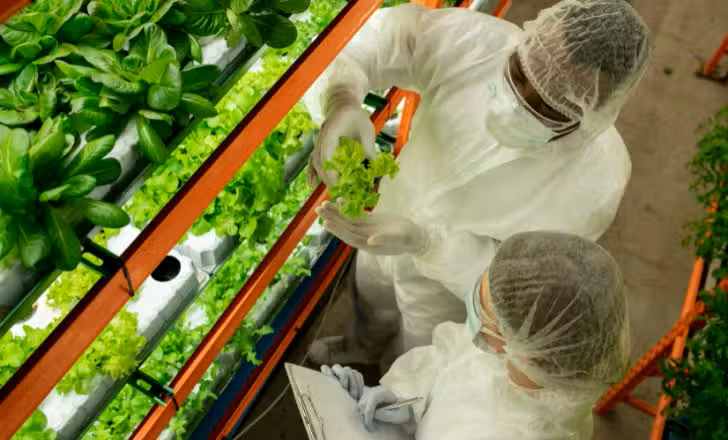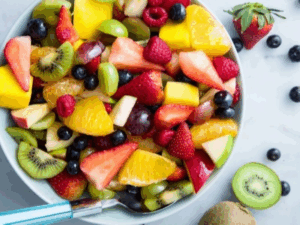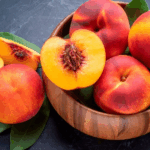Now Reading: What Is Vertical Farming?
-
01
What Is Vertical Farming?
What Is Vertical Farming?

Some say it’s the future for agriculture, while others say it won’t replace traditional farming.
Regardless, both sides have their fair share of reasons for their beliefs about the agriculture industry.
In this article, aside from knowing what vertical farming is, you’ll also discover its benefits, drawbacks, and other facts that’ll make you more knowledgeable about it!

What is vertical farming?
A skyscraper’s purpose is to give more room for workers or residents, maximizing space in cities. The same purpose goes for vertical farming.
Basically, vertical farming is growing crops by stacking them on top of each other.
This results in using significantly less land than traditional farming and implementing soilless farming.
Some vertical farming companies are even differentiating themselves by making soil-based vertical farms.
When did vertical farms start?
The earliest known form of vertical farming is the Hanging Gardens of Babylon, which is also considered a pioneer of hydroponic farming.
However, the term “vertical farming” was only coined in 1915 by an author named Gilbert Ellis Bailey.
Then, according to an American daily newspaper based in New York City, vertical farming was first applied in Armenia in 1951.
And in 1999, a professor named Dr. Dickson Despommier (along with 105 students) also came up with vertical farming after thinking about the harmful effects of agriculture.
But the first commercial vertical farm started in October 2012, when Sky Greens Farms first opened in Singapore.
Sky Greens Farms opened with 120 aluminum towers that were 30 feet tall (9.1 meters) – that’s as tall as two female giraffes stacked on top of each other!
What are the advantages of vertical farming?
Aside from using less land, vertical farming uses less water too. And speaking of water, vertical farming reuses its water and nutrients, resulting in zero waste.
This method of farming also decreases air pollution since it can be done in urban areas, meaning there’s no need for trucks to transport produce over long distances.
Pesticides aren’t needed for vertical farming either since vertical farms tend to be indoors, which are pest-free and weatherproof environments.
These two particular advantages of vertical farming lead to better air quality, fresher veggies, and fewer greenhouse gas emissions!
But out of all of these advantages, the one that stands out the most is the ability of vertical farming to be more efficient than traditional farming.
Why? Well, it plays a crucial role in meeting the increasing food demand that comes from the increase in world population.
What are the disadvantages of vertical farming?
“Lettuce for rich people” is what an American journalist said when she shared her thoughts about vertical farming.
It actually makes sense because vertical farming produce is more expensive than traditional farming produce.
Running a vertical farm comes at a hefty price due to various extra costs that you don’t need with nature. Artificial lighting, used in replacement of sunlight, is just one of these extra expenses.
Remember how I said that an advantage of vertical farms is that it’s pesticide-free since vertical farming is done indoors? Well, this advantage ironically creates a disadvantage because indoor farming makes pollination challenging to do due to the lack of pollinators like bees.
The solution would be manually pollinating plants through hand pollination, which can be time-consuming and labor-intensive.
What also limits the progress of vertical farming is that not all crops are suitable for this method of farming.
Which crop is best for vertical farming?
Most vertical farming companies focus on growing leafy green vegetables (like basil, lettuce, and kale) because they have high demand, and growing them doesn’t take long.
Plus, some produce, like rice, potatoes, and wheat requires more land space to grow.
So, crops that take up less space and less time to grow are a high priority for vertical farms, as they’re the most profitable to produce.
However, this isn’t to say that companies aren’t trying to plant these challenging crops for vertical farming.
Which celebrities have invested in vertical farming?
Celebrities like Justin Timberlake, Natalie Portman, and Jeff Bezos have invested in vertical farming companies.
For Justin Timberlake and Natalie Portman’s investment, they put their money into a vertical farming company based in New York City called Bowery.
Bowery uses robotics and artificial intelligence to manage its farms, which raised $300 million during its third round of funding in 2021.
According to the Bowery, their numerous US-based vertical farms can provide over 47 million servings of leafy greens per year!
Another vertical farming company that uses robotics and AI to manage its vertical farms is Plenty, which Jeff Bezos invested in in 2017.
The Amazon founder’s investment contributed to the money Plenty raised during that year, amounting to $200 million!
Vertical farming is an innovative agricultural method that helps us save land, water, and air pollution.
While it may solve many problems of traditional farming, it comes with its own issues and drawbacks.
But overall, vertical farming is a form of agriculture that has the potential to revolutionize the way we farm and consume produce.
General Disclaimer: The information provided in this blog is for informational purposes only. Info Ringer makes no warranties regarding the accuracy or completeness of the content. Readers are advised to verify details independently before making decisions based on the information provided.
Content Disclaimer:This blog is intended to share general knowledge and insights. It is not meant to replace professional advice or guidance. Info Ringer does not endorse or guarantee the accuracy of any information presented here.
Advertising Disclaimer:This blog may include affiliate links or advertising content. Info Ringer may earn a commission from purchases made through these links, which helps support the platform. However, all opinions expressed are independent and based on our editorial standards.
Affiliate Disclosure:Some links in this blog may direct you to external websites, and Info Ringer may receive a commission for purchases made through these links. This does not influence the integrity or neutrality of the content provided.
Third-Party Links Disclaimer: This blog may contain links to third-party websites. Info Ringer does not assume responsibility for the accuracy, content, or policies of external websites. Readers are encouraged to review the terms and privacy policies of linked sites.
Legal Disclaimer: Info Ringer does not guarantee the safety, reliability, or quality of any products, services, or recommendations mentioned in this blog. Use any information or purchase products at your own discretion and risk.
Stock Image Disclaimer: Images featured in this blog are for illustrative purposes only. They may not reflect actual locations, products, or scenarios discussed in the content. These images are intended solely to enhance the reader’s experience.
Results Disclosure: The experiences or suggestions mentioned in this blog may vary from person to person. Outcomes are not guaranteed and depend on various factors, including individual preferences and circumstances.
Copyright Disclaimer: This content is the property of Info Ringer and is intended for personal use only. Redistribution or unauthorized use of this blog’s content is strictly prohibited.
























